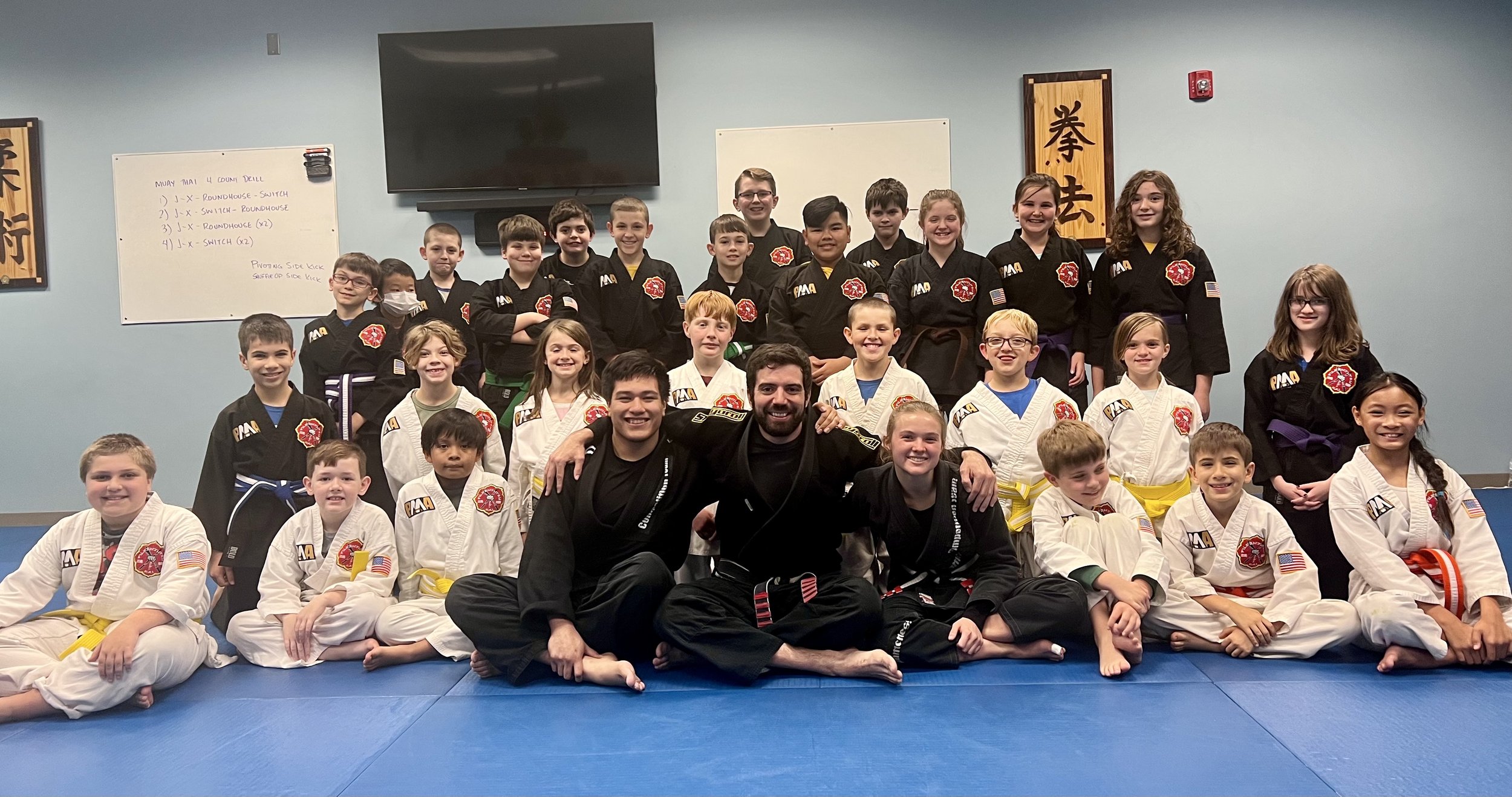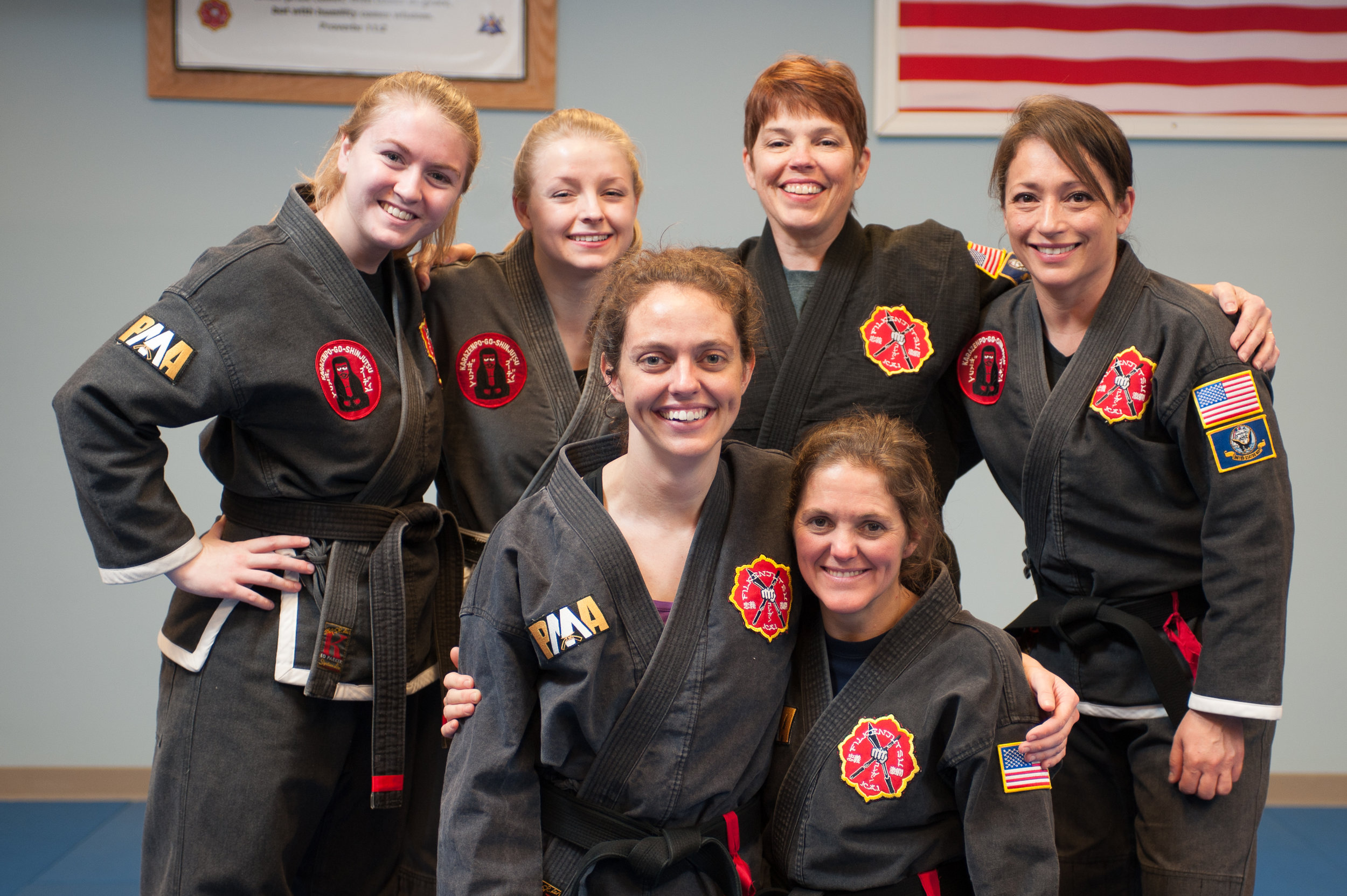Any student at Progressive Martial Arts Academy should be familiar with the phrase: “Leave your ego at the door.” We did not coin this phrase but consistently encourage our students to follow it. The thing is - this phrase means much more than what it may seem on the surface. This phrase is an essential component of “the Martial Arts Way of Life” and something that we can all do to grow our sense of true self, become better martial artists, and live more in the moment than ever before.
At first glance, I think most students believe that this phrase is telling them not to be afraid of making mistakes, losing sparring sessions, or admitting weaknesses. They are right, but when you examine it, it means so much more.
What is an ego?
An ego is something every person develops at an early age that can influence anything from the way we dress to the way we speak and behave in social situations. At a very young age, we realize that people around us expect us to act a certain way, and we learn that certain behaviors cause people to “like” us more so we conform to those expectations and develop a version of ourselves that we “put on” when we leave our homes.
Many times, if you pay attention, you may notice that you might have different egos for when you are with different people. You might speak one way when with family members, another way with friends, and a completely different way with co-workers. That is a classic example of the ego in action.
When you walk onto the mat, we would love for you to leave your ego behind and be your true self. Many factors may make this easier than it would be in other situations - starting with the uniform and the belt. Every student at PMA starts with the same white uniform (gi) and the same rank (white belt). You do not have to think about dressing a certain way to impress anyone or fit in. It doesn’t matter where you come from, who you know, how much money you make, or what your gender, age, or race is - everyone starts at the same rank and has to earn their position in the dojo with hard work, dedication, and consistent training.
Why Should We Leave Our Ego Behind?
In our academy, we have this phrase (Leave Your Ego at the Door) hanging on the wall; partly because we know it is essential for a student to keep this in mind or they may not make it far in their training. When the ego is not left behind, and emotions are allowed to enter the dojo with you, you are bound to run into issues.
The martial arts we teach are extremely functional, and you cannot “pretend” to be skilled in them if you are not. For example, in Brazilian Jiu Jitsu, if someone allows themselves to mistakenly believe they are more skilled at grappling than they are, that they should be able to defeat a particular training partner, or that they have the ability to perform a difficult technique, they will quickly be faced with reality. There is no way to pretend in Brazilian Jiu Jitsu that you are what you aren’t.
Bringing any emotion onto the mat can be detrimental to a student’s training experience. We encourage pride, expectations, stress, anger, frustration, sadness, anxiousness, and even positive emotions like happiness and excitement to be left at the door because they can cloud our judgment, decision-making processes, and ability to learn. Doing this can prove to be extremely challenging and something that takes most martial artists years to master but is one of the most defining qualities of martial arts masters around the world from many different arts.
How do we leave it behind?
Start with insecurities, expectations, and self-consciousness. This week in training, avoid coming into class with any expectations for your performance. That includes how quickly you should be able to learn the techniques, or how much you think you already know, who you think you can “beat,” and what you should or shouldn’t be able to do.
Starting with your words, do not talk about yourself or compare yourself to other students (this already shouldn’t happen because of another martial artist quality - humility), but also include your thoughts. Before, during and after training resist the urge to judge yourself and other students.
Here are some classic examples of the ego not left behind that you can try to avoid:
Example #1:
"I'm not very good at ________________."
We make statements like this to lower our teacher's or training partner's expectations of our performance. This insecurity will get in the way of your training. At least in our academy, your teachers and training partners will not be disappointed in you for doing your best and falling short of perfection. We will be impressed with you just showing up and training hard!
Example #2:
"Hey, when I caught you in that arm bar, do you remember how I did it?"
If you do something well in training, don't draw attention to it. That is a classic example of the ego in action. I know you are proud of your accomplishment but drawing attention to it will only make your partner feel sad or angry, and make you look too proud! Again, just show up and train hard!
Example #3:
**Teacher walks by to watch you practice a technique, and because you are a little embarrassed by what you might look like if you mess it up, you stop and ask a question instead of doing the technique.
Your teacher does not expect you to be already able to do the technique, that's why you are in their class! If you try your best and mess it up, your teacher should be embarrassed for not teaching it well enough if anything.
Instead, when the teacher comes by - do the technique to the best of your ability and show them what your best looks like right now. They might make some corrections, or they might be happy with where you are now and move on. Afterwards, if you genuinely do have a question - now ask it.
Example #4:
**Getting angry or frustrated when you don't "win." Or sometimes worse, trying too hard to win.
In our kid's classes, we have "mat chats" from time to time where we talk about "the spirit of competition." The spirit of competition is when everyone is having fun. The nature of competition is that you have to try to win, but when you start letting your desire to win become so important that your partner's well-being or safety are at risk, then you have let your ego get in the way of the training.
Don't be overly happy when you win, and don't be overly frustrated or sad when you lose. After all, we are not opponents in the academy - we are training partners, and we are all co-trainers for each other.
We are so proud of the culture and training environment we've built at PMA because of rules and mindsets like this. Training in an environment where you are challenged, safe, having fun, and getting better every class is how you set yourself up to train for the rest of your life - which should ultimately always be the goal.



















